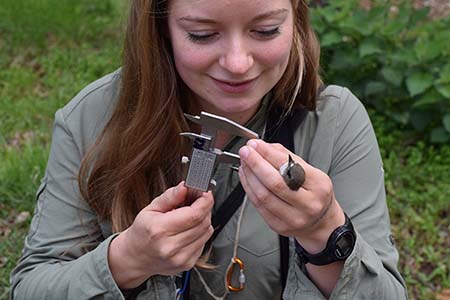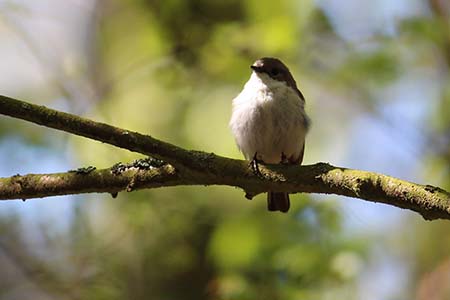Vrouwtjesvogel slachtoffer van haar Valentijn
Vrouwtjes zangvogels hebben het niet gemakkelijk in de liefde. Bij sommige soorten, zoals de bonte vliegenvanger, probeert het mannetje als hij eenmaal een partner heeft nog een extra vrouwtje aan de haak te slaan. Er werd lang vanuit gegaan dat de vrouw waarvan de eieren als eerste uitkomen, er niet onder lijdt als het mannetje er een tweede gezin op nahoudt. Die mannetjes werken immers vooral voor hun eerste broedsel. Promovendus Koosje Lamers en prof. dr. Christiaan Both van de Rijksuniversiteit Groningen 'onhullen' dat vrouwtjes die een man delen met een andere vrouw slechter overleven, en dat vooral vroeg in het voorjaar broeden het risico op overlijden vergroot.

De beide Groninger ecologen bestudeerden 12 jaar lang een grote populatie bonte vliegenvangers die in Drenthe in nestkasten broedt. Het overgrote deel is monogaam, maar sommige mannetjes houden er meerdere vrouwtjes op na. Als hun vrouw op de eieren zit te broeden, zoekt de Valentijn verderop een tweede nestkast, waar hij weer gaat zingen om een nieuwe vrouw aan te trekken. Het bleek dat vooral vrouwtjes die relatief vroeg eieren leggen vaker hun mannetje met een tweede vrouw moeten delen. In een experiment verplaatsten de onderzoekers Nederlandse vliegenvangervrouwen naar Zweden, waar deze vrouwtjes veel vroeger dan gemiddeld broeden. De mannetjes waarmee deze vrouwtjes een koppeltje vormden, kregen er ook veel vaker een tweede vrouwtje bij.

Sharing is NOT caring
“Vroeg broeden kan er toe leiden dat een vrouwtje haar mannetje moet delen, met behoorlijk negatieve gevolgen. Niet zozeer voor haar jongen, maar vooral voor haarzelf”, aldus Koosje Lamers. In recent gepubliceerde onderzoek in het Journal of Avian Biology beschrijven de onderzoekers dat het aantal jongen dat het eerste jaar overleeft niet afhangt van of een nest een monogame vader had of dat de man een tweede vrouw er op nahield. Maar de vrouwtjes hadden het wel moeilijker. De vrouwtjes die een man deelden, overleefden minder vaak tot het volgende jaar. De RUG-ecologen vermoeden dat een vrouwtje wel degelijk minder hulp ontvangt van haar man als hij een tweede vrouw heeft. Ze neemt waarschijnlijk een groter deel van de zorg voor de jongen op zich, en dat gaat ten koste van haar eigen gezondheid en toekomst.

Klimaatverandering
Het precaire liefdesleven van de bonte vliegenvanger helpt niet in de aanpassing aan klimaatverandering. Eerder onderzoek liet zien dat vliegenvangers juist eerder zijn gaan broeden om het vroegere voorjaar bij te houden. Christiaan Both: “Dat heeft dus niet alleen maar voordelen, want vrouwtjes die vroeg broeden lopen dus extra risico dat hun ‘Valentijn’ nog andere vrouwtjes verovert, met alle nadelige gevolgen voor haar.”
Meer nieuws
-
02 december 2025
Student Menna Zahran wint Unilever Research Prize
-
27 november 2025
Vliegtuigen spotten met een radiotelescoop
